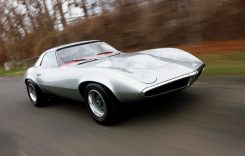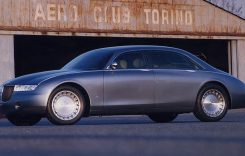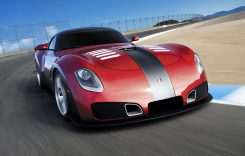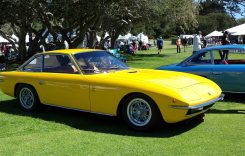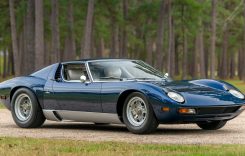Italdesign Giugiaro stopped at nothing until it was able to transform two W12 concept cars into becoming the fastest cars worldwide with its systems that led to the highest levels of performance and driving dynamics.
The W12 Nardo Concept is the third stage of evolution of these two cars. It was at the 1997 Tokyo Motor Show that everyone first witnessed the W12 Syncro prototype. Then at the 1998 Geneva Motor Show, we all saw the debut of the “roadster” – an improved version of the W12 Syncro – at Volkswagen’s stand.
At the 2001 Tokyo Motor Show, audiences saw the final form of this sports car project, which is powered by a W12 engine derived from the motor sports world. After its debutt, the concept came into the stage of production development where tough decisions had to be made.

A speed record for distance driven in 24 hours was set in October 2001 by a W12 coupe prototype in its last phase of development. In this project, the technical staff of Volkswagen and the members of Italdesign Giugiaro have been closely working together to create the design.
The coupe’s body is flat and long while its subtly styled rear spoiler automatically extends when it reaches a speed of 120 km/h. This may be a dynamic sports car but it was designed to be timelessly elegant.
Because of the monocoque construction and the fact that the longitudinal engine is located at the back of the passenger compartment, the vehicle’s front end could maintain its flatness.
Safety and speed on the W12 coupe can be guaranteed with its technically advanced front and rear axle with double wishbone, multiple electronics modules, an exceptional weight distribution of almost 50:50, and an extended wheelbase of 2.63 metres.
Included in its wide range of safety systems are the traction control system TCS and the electronic stability program ESP. Response is managed via the brakes as well as by the central engine management system. Its wheels can avoid overspinning at speeds slower than 40 km/h as its brakes have been fitted with electronic differential locks.
If you want to bring the W12 coupe to the racing track, you may turn off its electronic running gear systems. The designers made these adjustments to the basic concept of the brake system in anticipation of these instances. The front and the rear have ventilated Brembo brakes with a disc diameter of 318 millimetres.
For convenience, the handbrake can be electrically triggered by simply pushing on a button. Now let’s talk about how a prototype in its final development stages was able to set a 24-hour world speed record on Feb. 23, 2002.
This 12-cylinder sports car, which boasts an output of 440 kW/600 bhp, drove 7,740.57600 kilometers (4809.8 miles) and was recorded to have an average speed of 322.891 km/h (200.67 mph). Two more world records were set by drivers in the over 5,000 kilometres and 5,000 miles categories as they drove the Volkswagen W12 Coupe that had the ability to reach 350 km/h (217 mph).
However, this unit had not been adapted to make the attempt to set the long-distance record. It had also done so well that it got six vehicle class records internationally.
In fact, it only took a trial run for it to break the class record for 12 hours. The Fédération Internationale de l’Automobile or FIA had recognized the record drives achieved on the high-speed circuit at Nardo located near Lecce in southern Italy as these were accomplished in compliance with the agency’s official regulations.
The vehicle was put through the 24-hour test to study its performance potential and to determine just how robust its 12-cylinder engine is. There’s no argument that this sports car surpassed all requirements based on the records it set as well as on the initial technical assessments made on it.
